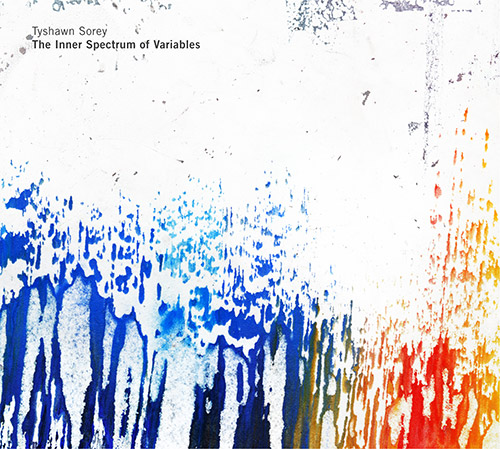Drummer/Composer Tyshawn Sorey has made a significant impact on the improvised music scene for years. Spread across two CDs, his latest project The Inner Spectrum of Variables is a bold and ambitious piece of work that unravels throughout multiple movements, forging a working link between the worlds of composition and free improvisation. Toeing the line between contemporary Classical composition styles and Jazz’s improvisational spirit, Sorey has brought his unique set of influences and perspective to his work both as a leader of several ensembles and as a sideman for legends Anthony Braxton, Vijay Iyer, and John Zorn. On this record, he displays his experience to put together an adept ensemble of players from both the Jazz and Classical idioms by including Cory Smythe on piano, Christopher Tordini on bass and a string section of violinist Chern Hwei Fung and violist Kyle Armbrust, as well as cellist Rubin Kodheli.
“Movement I” opens with a delicately romantic solo piano intro with its softer parts interspersed with heavy, dramatic chord clusters. Toward the end, the piece develops into a swiftly moving section which resolves itself with a lovely, articulate melodic statement. “Movement II” is a more lengthy, exploratory piece. From the onset, Rubin Khodeli’s lone mournful cello plays increasing in speed and intensity until the other ensemble members join in, pushign even higher when Sorey’s tom-heavy drumming appears about 8 minutes in. “Movement III” is the most lengthy piece on the project, clocking in at over thirty five minutes. The piece opens with staccato piano chords in concert with Sorey’s jagged, but in-pocket drumming. As the the string section takes over, the drama is heightened with screechy violin lines and pizzicatos intersecting deftly before yielding to a beautifully melodic (and too short) section of piano and strings. In sharp contrast to this soft moment, the ensemble follows it by introducing the next section with a steadily building wall of fire and power. Of all the movements found on this project “Movement III” is the most densely packed with diverse ideas. It is effectively the emotional and conceptual heart of the album.
The second disc opens with “Reverie” a ghostly, atmospheric dirge composed of sparse, delicate percussion work. The metal percussion is played expertly by Sorey, rung and struck gently allowing ample space for the full tonal range of the percussion to be felt. Midway through the piece, Sorey is joined by a gorgeously weeping viola and cello. “Reverie” like much of the album’s second disc is far more reliant on setting a distinct atmosphere than any memorable
melodic statements. With the addition of Smythe’s “barely there” piano chords the piece takes on an almost unbearably tense and minimal character. Around the 11-minute mark the ensemble lays out and allows Smythe to explore a few variations on an understated idea before the string section returns with a bold and articulate melodic line. Keeping in line with the string dominated second disc, “Movement IV” evolves from its soft, drone-like introduction into a lively, playfully rhythmic dance between the violins, contrabass and Sorey’s forceful drumming. While it is unclear the degree to which certain sections are composed and which are improvised, the intersection of improvised and seemingly prepared musical elements is at times magical. Over the course of the album’s six major movements Sorey consistently displays his strength as a composer and leader. He uses these strengths as well as the talents of his ensemble to deliver performances that are ripe with musical depth and imagination.
–John Morrison, October 11, 2016

